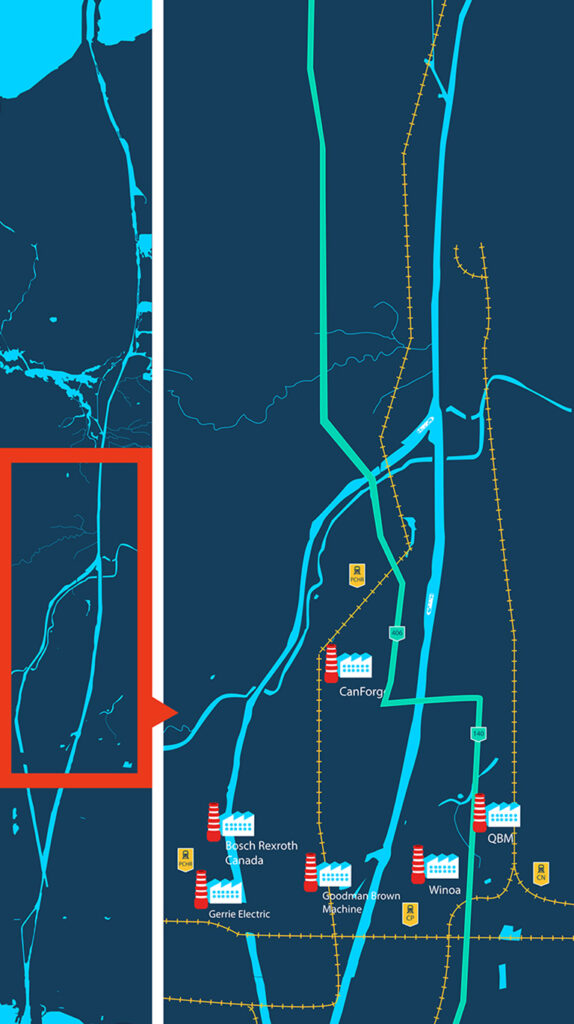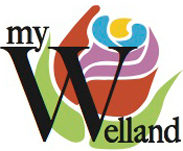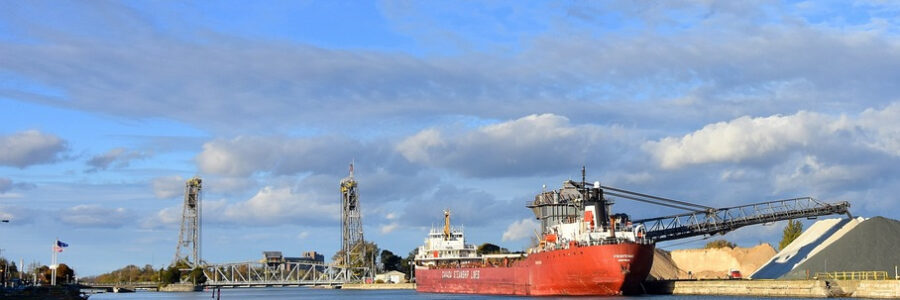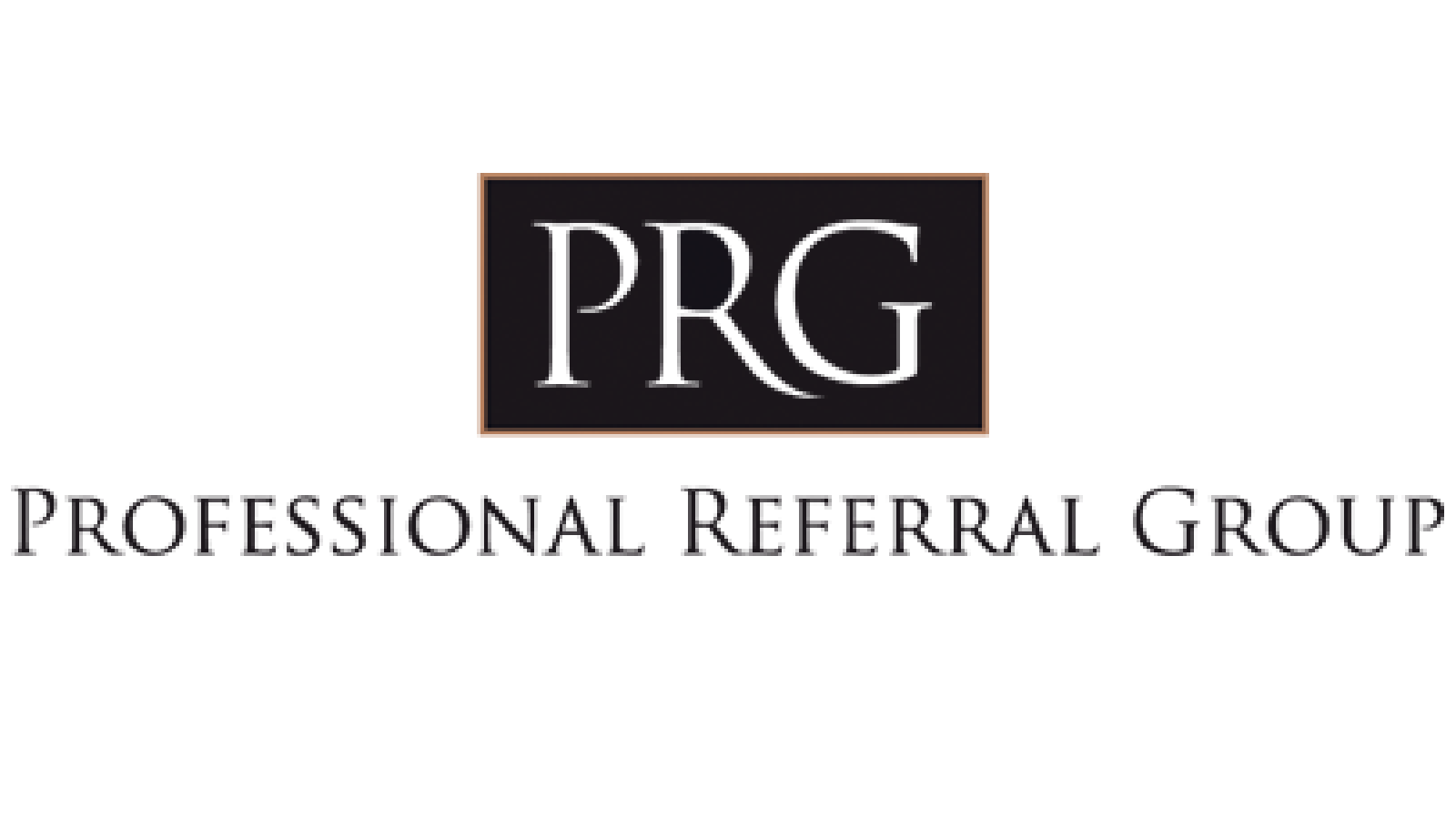The Welland Canal is the backbone of the Great Lakes trade economy. For Niagara, its impact goes far beyond the water and the ships that sail it.
The Welland Canal Corridor connects the Canal to an extensive infrastructure network, serving companies through out the Canal municipalities. Only when looking at every piece of that puzzle — highways, rails, industries connected to the marine sector and more — can one form a complete picture of the Canal’s footprint in Niagara.
out the Canal municipalities. Only when looking at every piece of that puzzle — highways, rails, industries connected to the marine sector and more — can one form a complete picture of the Canal’s footprint in Niagara.
Companies connect to the Canal by a network of two Class 1 and short-line rail lines, allowing for easy movement of goods by train. Highway 406 and the QEW tie quickly into regional routes and connect to the US-Canada border as well as the Greater Toronto Area, providing easy road access to markets in both Canada and the United States.
These road and rail connections give industry options for where to locate in Niagara, while still having connectivity to the Canal. In St. Catharines, for instance, many industries connected to the marine sector locate near the Garden City Skyway on north. Businesses in Welland concentrate along rail lines and highways rather than along the Canal proper, while in Port Colborne, they’re located closer to the waterway.
These businesses, and the infrastructure that supports them, form the heart of an immense multi modal trade network, handling $94 billion in cross-border freight every year. The Canal Corridor’s location puts half of North America’s population within a one-day drive, with Toronto just 122 kilometres away and New York City at roughly 650 kilometres. Approximately 1.86 million people live within 50 kilometres of Niagara, ensuring businesses locating in the Canal Corridor have access to a deep talent pool without the challenges of prolonged commutes.
The St. Lawrence Seaway stretches 3,700 kilometres into North America’s industrial heartland. The Welland Canal is a vital part of that trade backbone. The infrastructure to support business and industry is right here in Niagara — ideal for investment.
This article is part of a feature series highlighting the importance and impact of the Welland Canal Corridor and the businesses that operate on and around it. This feature series is provided by the economic development offices of the Canal communities of St. Catharines, Welland, Thorold and Port Colborne.
 Back to myNiagaraOnline
Back to myNiagaraOnline






















